Political cartoonists have a unique and influential role in shaping public discourse, using humor, satire, and visual storytelling to comment on political events, social issues, and cultural trends. Their work often reflects their personal views and the editorial stance of the publications they work for, making political cartoons a powerful medium for expressing opinions and provoking thought. This guide explores the role of political cartoonists, the impact of their views on society, and notable examples of cartoonists who have made a significant mark in this field.
1. The Role of Political Cartoonists
Commentary on Current Events
- Critical Analysis: Political cartoonists offer a critical analysis of current events, often highlighting the absurdities, contradictions, or injustices in political decisions and social issues. Through exaggeration and satire, they provide commentary that can be more impactful than written editorials.
- Reflection of Public Sentiment: Political cartoons often capture and reflect public sentiment, resonating with the audience’s frustrations, fears, or hopes. By doing so, they play a role in shaping public opinion and sparking dialogue.
Simplifying Complex Issues
- Visual Metaphors: Cartoonists use visual metaphors and symbols to distill complex political issues into easily understandable images. This simplification makes the issues more accessible to a broader audience, encouraging engagement from those who might not follow in-depth political analysis.
- Accessible Critique: Political cartoons offer an accessible form of critique, where the message is conveyed in a single image or a few panels. This accessibility is key to their effectiveness in reaching a wide and diverse audience.

Challenging Authority and Social Norms
- Subversive Art: Political cartoonists often challenge authority, question social norms, and critique those in power. Their work can be subversive, using humor to undermine official narratives and bring attention to alternative perspectives.
- Advocacy for Change: Many political cartoonists use their platform to advocate for social or political change, pushing back against policies they see as unjust or harmful. Their cartoons can mobilize public support for various causes, from civil rights to environmental protection.
2. Influence of Personal and Editorial Views
Personal Views of the Cartoonist
- Subjectivity in Art: Political cartoons are inherently subjective, reflecting the cartoonist’s personal views on the issues they depict. These views influence how they portray political figures, policies, and social issues, often leading to a distinct voice and style.
- Ethical Considerations: While personal views are central to political cartooning, cartoonists often grapple with ethical considerations, such as avoiding harmful stereotypes or ensuring their satire is targeted appropriately. The line between sharp critique and offensive content can be thin, and navigating it requires skill and awareness.
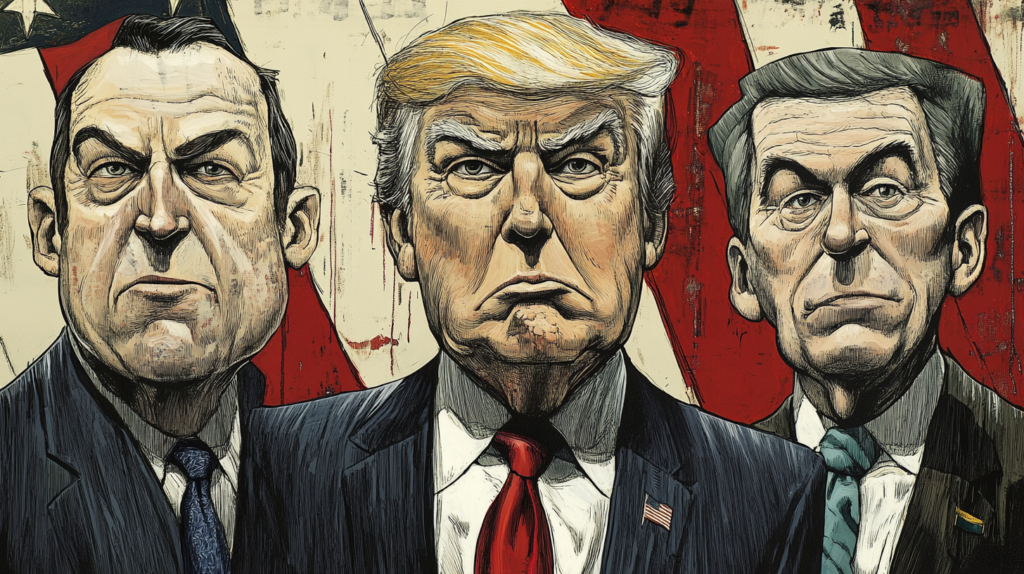
Editorial Stance of the Publication
- Alignment with Editorial Policy: Political cartoonists typically work within the editorial framework of the publications they are associated with. This means their work often aligns with the publication’s overall editorial stance, whether liberal, conservative, or somewhere in between.
- Constraints and Freedom: While some cartoonists enjoy significant creative freedom, others may face constraints based on the publication’s policies or the sensibilities of its readership. Balancing personal views with editorial expectations is a key challenge in the profession.
3. Impact on Society and Public Opinion
Shaping Public Discourse
- Framing the Debate: Political cartoons can frame the debate on key issues, highlighting aspects of the story that might be overlooked or downplayed in other forms of media. By doing so, they influence how the public perceives and discusses these issues.
- Amplifying Voices: Cartoonists can amplify the voices of marginalized or underrepresented groups, bringing attention to social justice issues, inequality, and other important causes. Their work can be a powerful tool for advocacy and awareness-raising.

Provoking Thought and Debate
- Challenging Assumptions: Effective political cartoons challenge assumptions and provoke thought. By presenting familiar issues in new ways, cartoonists can make their audience reconsider their views and question the status quo.
- Fostering Dialogue: Cartoons that spark debate contribute to a more engaged and informed public. Whether through social media, letters to the editor, or public forums, the discussions prompted by political cartoons can lead to greater civic participation.
Risks and Controversies
- Potential for Backlash: Political cartoonists often take risks by addressing contentious issues or targeting powerful figures. This can lead to backlash, including public criticism, threats, or even censorship. Navigating these risks is part of the challenge of the profession.
- Censorship and Free Speech: In some cases, political cartoons have been censored, either by governments or by the publications themselves, due to their controversial nature. This raises important questions about freedom of speech and the role of satire in democratic societies.
4. Notable Political Cartoonists and Their Contributions

Thomas Nast (1840–1902)
- Pioneering American Political Cartoonist: Known as the “Father of the American Cartoon,” Thomas Nast was a German-born American cartoonist whose work in Harper’s Weekly helped define American political cartooning.
- Key Contributions: Nast is famous for his cartoons attacking political corruption, particularly his depictions of Boss Tweed and the Tammany Hall political machine. He also popularized symbols like the Republican elephant and Democratic donkey, which are still in use today.
Hergé (1907–1983)
- Creator of Tintin: Hergé, the pen name of Belgian cartoonist Georges Remi, is best known for creating The Adventures of Tintin. While primarily known for his adventure comics, Hergé’s work often included political commentary, reflecting the complex political landscape of Europe before and during World War II.
- Political Engagement: Hergé’s early works, such as Tintin in the Land of the Soviets, were politically charged, critiquing totalitarian regimes. His work evolved over time, becoming more nuanced in its political and social observations.
Herblock (1909–2001)
- American Editorial Cartoonist: Herbert Block, known as Herblock, was a prominent American editorial cartoonist who worked for The Washington Post for over 55 years. His work is noted for its sharp critique of political figures and policies, particularly during the Cold War and the Watergate scandal.
- Impact: Herblock’s cartoons were influential in shaping public opinion on major issues of his time, including civil rights, McCarthyism, and the Vietnam War. He won three Pulitzer Prizes for his work and was a vocal advocate for press freedom.
R.K. Laxman (1921 – 2015)
- Viewpoint: R.K. Laxman was an Indian cartoonist known for his creation of “The Common Man,” a character who represented the everyday struggles of the Indian populace. Laxman’s cartoons were known for their subtle satire and commentary on the political and social issues in India.
- Impact: Laxman’s work provided a voice for the common people in India, critiquing the inefficiencies and corruption of the government. His cartoons were widely read and respected for their ability to address serious issues with humor and insight.
Steve Bell (1951–Present)
- British Political Cartoonist: Steve Bell is a prominent British cartoonist whose work has appeared in The Guardian since 1981. Known for his biting satire and distinctive style, Bell has been a key figure in British political cartooning for decades.
- Satirical Targets: Bell’s cartoons often feature exaggerated, grotesque depictions of political figures, including Margaret Thatcher, Tony Blair, and Boris Johnson. His work is known for its sharp critique of government policies, wars, and social issues.
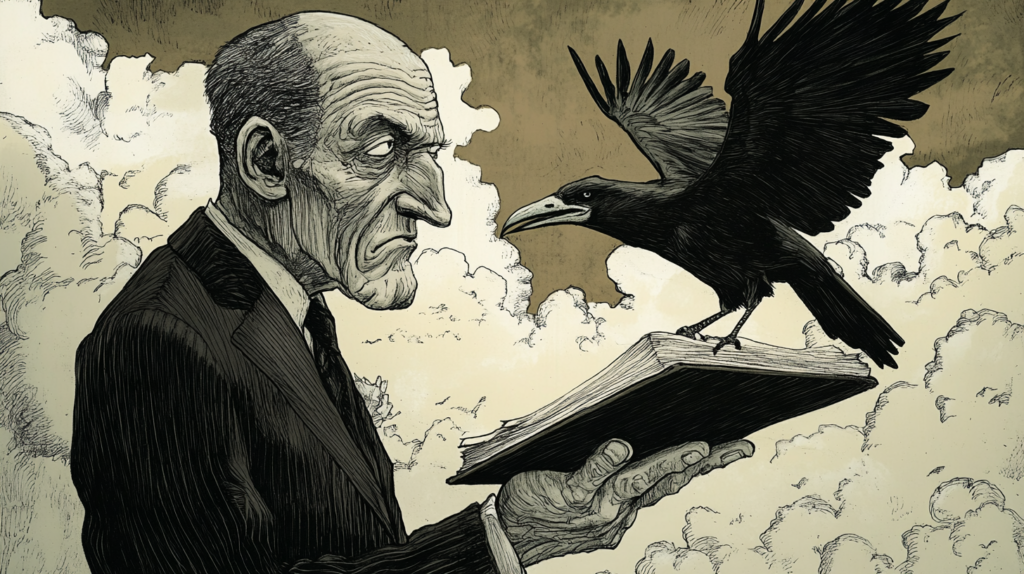
5. The Future of Political Cartooning
Adapting to Digital Media
- New Platforms: The rise of digital media has transformed how political cartoons are created, distributed, and consumed. Social media platforms allow cartoonists to reach global audiences instantly, but they also present challenges in terms of censorship, copyright, and the virality of content.
- Multimedia Cartoons: Some cartoonists are experimenting with multimedia formats, including animations and interactive content, to engage audiences in new ways. This adaptation to digital trends may define the future of political cartooning.
Global Perspectives
- International Collaboration: The internet has facilitated greater collaboration among political cartoonists worldwide, allowing for the exchange of ideas and the creation of global movements in support of press freedom and human rights.
- Cross-Cultural Dialogue: Political cartoons can also foster cross-cultural dialogue by addressing global issues like climate change, migration, and inequality, showing how these problems transcend national boundaries.
Challenges Ahead
- Censorship and Free Speech: As political cartoonists continue to push boundaries, they may face increasing threats of censorship, particularly in authoritarian regimes. The ongoing fight for freedom of expression will remain a central issue for the profession.
- Evolving Ethical Standards: As societal values shift, political cartoonists must navigate changing ethical standards, balancing satire with sensitivity to issues like race, gender, and cultural representation.
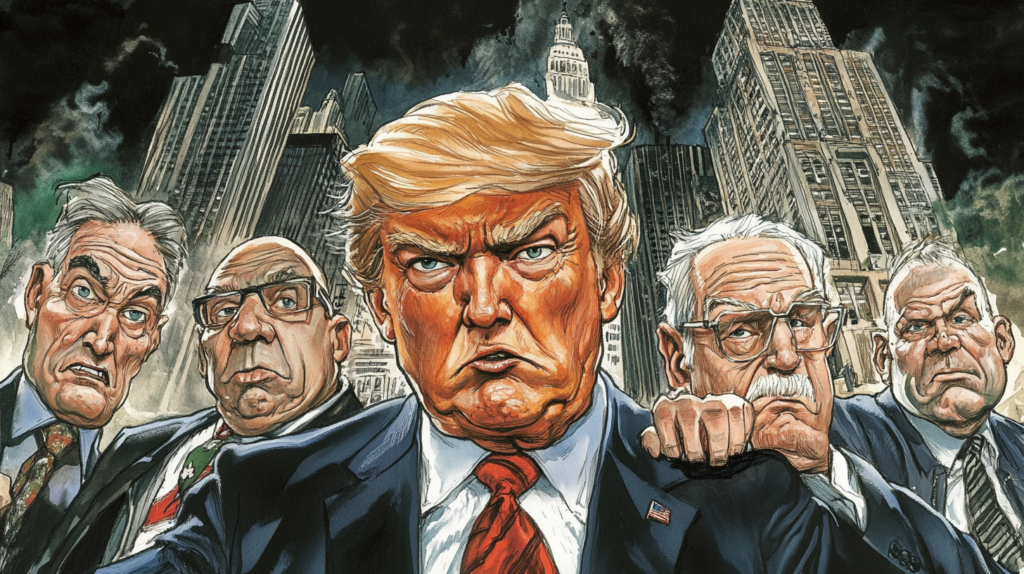
6. Challenges Faced by Political Cartoonists
Censorship and Freedom of Expression
Political cartoonists often face challenges related to censorship and threats to freedom of expression. In some countries, cartoonists who criticize the government or powerful figures risk persecution, imprisonment, or even violence. Despite these risks, many cartoonists continue to speak out, using their art as a tool for resistance.
Balancing Humor with Sensitivity
While humor is a key element of political cartoons, cartoonists must also be mindful of the potential impact of their work. Striking the right balance between humor and sensitivity can be challenging, especially when addressing topics that involve human suffering or deeply held beliefs.

Public Backlash
Political cartoonists are no strangers to public backlash, especially when their work touches on controversial or polarizing issues. Cartoonists must be prepared to face criticism and defend their work, often navigating a fine line between provoking thought and provoking outrage.
The Enduring Influence of Political Cartoonists
Political cartoonists hold a unique place in the media landscape, using their art to challenge power, provoke thought, and influence public discourse. Their work reflects their personal views, the editorial stance of their publications, and the broader cultural context in which they operate. Despite the challenges of censorship and changing media environments, political cartoonists continue to play a vital role in shaping how we understand and engage with the world around us. As the field evolves, the power of political cartoons to inspire, critique, and connect remains as strong as ever.
Frequently Asked Questions: Political Cartoonists and Their Views
What is the role of a political cartoonist?
- Satire and Commentary: Political cartoonists use satire and visual commentary to offer insights and critiques on political events, public figures, and societal issues.
- Engagement: They aim to engage readers by presenting complex political concepts in a simplified, often humorous or exaggerated manner.
- Provocation: Political cartoons often provoke thought and discussion by highlighting inconsistencies, hypocrisies, or important issues in a visually striking way.
How do political cartoonists form their views on political issues?
- Research: Cartoonists typically conduct thorough research on current events, policies, and political figures to inform their viewpoints and ensure accuracy.
- Personal Beliefs: Their personal political beliefs and ideologies often influence their perspectives and the way they choose to represent various issues.
- Public Sentiment: They may also consider public opinion and the general mood of the electorate when crafting their cartoons.
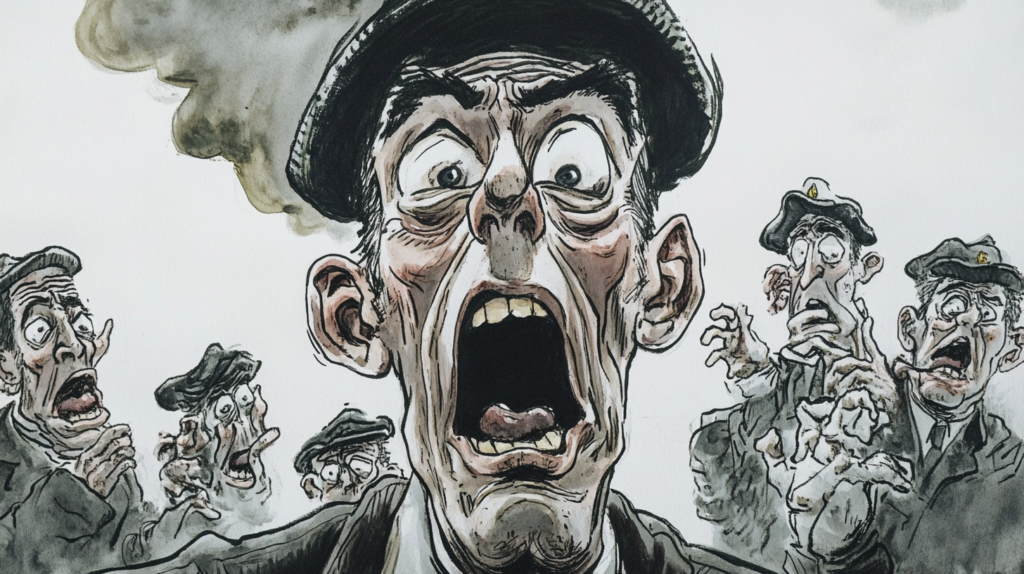
How do political cartoonists balance personal bias with objectivity?
- Awareness: Many political cartoonists are aware of their own biases and strive to present a balanced perspective, even when expressing strong opinions.
- Diverse Perspectives: To counteract personal bias, some cartoonists may incorporate a range of perspectives in their work or collaborate with peers to ensure diverse viewpoints.
- Ethical Standards: Adhering to ethical standards of journalism and satire helps cartoonists maintain credibility while expressing their views.
What impact do political cartoons have on public opinion?
- Awareness: They can raise awareness about political issues and contribute to public discourse by presenting information in an engaging format.
- Persuasion: By highlighting particular aspects of an issue or figure, political cartoons can influence public opinion and shape perceptions.
- Reflection: They often reflect and amplify prevailing sentiments or concerns within society, serving as a mirror to public opinion.
How do political cartoonists respond to criticism of their work?
- Constructive Criticism: Many cartoonists view criticism as an opportunity to refine their craft and consider alternative perspectives.
- Defensive Stance: Some may defend their work by explaining their intent and the context behind their cartoons, particularly when faced with backlash.
- Adaptation: They may adapt their approach based on feedback to better align with their audience’s expectations or address concerns.

What challenges do political cartoonists face in their work?
- Censorship: They may encounter censorship or restrictions from publishers, governments, or other entities that disapprove of their content.
- Controversy: Political cartoons often provoke strong reactions and controversy, which can lead to backlash or personal attacks.
- Bias Accusations: Cartoonists may be accused of bias or partisanship, which can affect their reputation and audience trust.
How do political cartoonists ensure their work remains relevant?
- Timeliness: They focus on current events and issues to ensure their cartoons address timely topics and engage with ongoing debates.
- Adaptability: Cartoonists may adapt their style and content to reflect changing political landscapes and audience interests.
- Engagement: Staying connected with their audience and responding to current events helps cartoonists maintain relevance and impact.
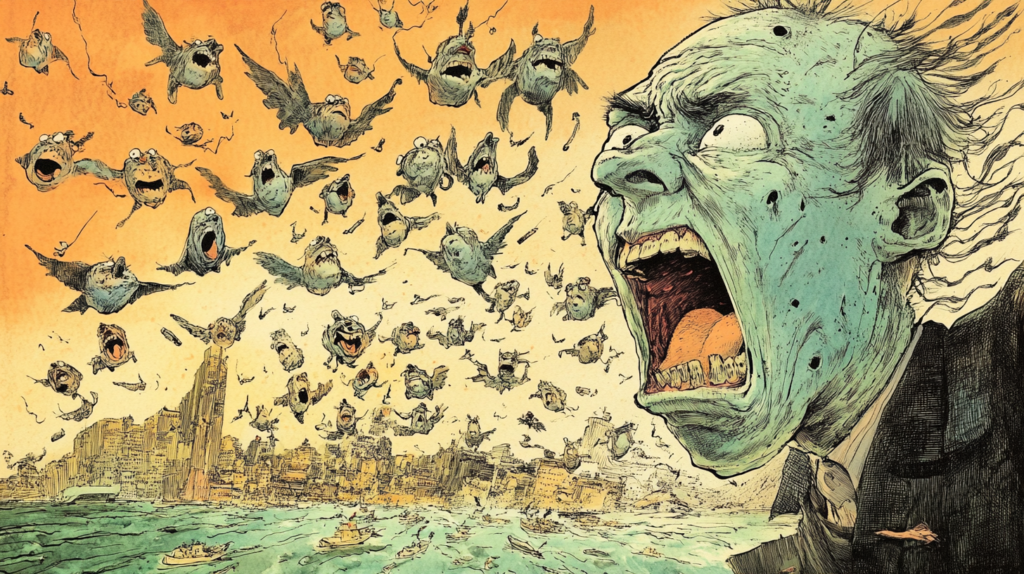
What role do political cartoonists play in political discourse?
- Catalysts for Debate: They stimulate discussion and debate on political issues by presenting different viewpoints and critiques.
- Informers: By simplifying complex issues, political cartoons help inform the public and contribute to a better understanding of political dynamics.
- Activists: Some cartoonists use their platform to advocate for change or highlight social injustices, acting as agents of social and political activism.
How has the role of political cartoonists evolved with the rise of digital media?
- Increased Reach: Digital media has expanded the reach of political cartoons, allowing them to be shared widely on social media platforms and websites.
- Interactive Engagement: Online platforms enable more direct interaction with readers, including feedback, comments, and discussions.
- New Formats: Digital tools have introduced new formats and techniques, such as animated cartoons and multimedia presentations, enhancing the ways cartoons can be created and consumed.
What are some notable examples of influential political cartoonists?
- Thomas Nast: Often considered the father of American political cartooning, known for his critical cartoons on corruption and his role in the downfall of Tammany Hall.
- Herblock (Herbert Block): Famous for his editorial cartoons that critiqued political figures and policies, particularly during the McCarthy era.
- Steve Bell: Known for his provocative and satirical cartoons that comment on British and global politics.
- Calvin and Hobbes’ creator Bill Watterson: Though not strictly a political cartoonist, his work often included social commentary and critique.
Political cartoonists play a crucial role in shaping and reflecting political discourse, using their craft to engage, inform, and provoke thought among their audience. Understanding their perspectives and challenges provides insight into how they influence public opinion and contribute to the broader conversation on political and social issues.
This post was created with our nice and easy submission form. Create your post!





3 Comments